I asked Josh Rosen if Mitch could pay him a visit with his camera to see what he’s been up to, which turns out to be quite a lot. The landscape architect, aka airplantman, is moving away from full-time landscape architecture and focusing more on product design and custom work for clients as farflung as Singapore, as well as teaching a plant materials course at UCLA Extension. For such restless creativity, one thing has remained constant for the last decade or so with his design process: there will be tillandsias.
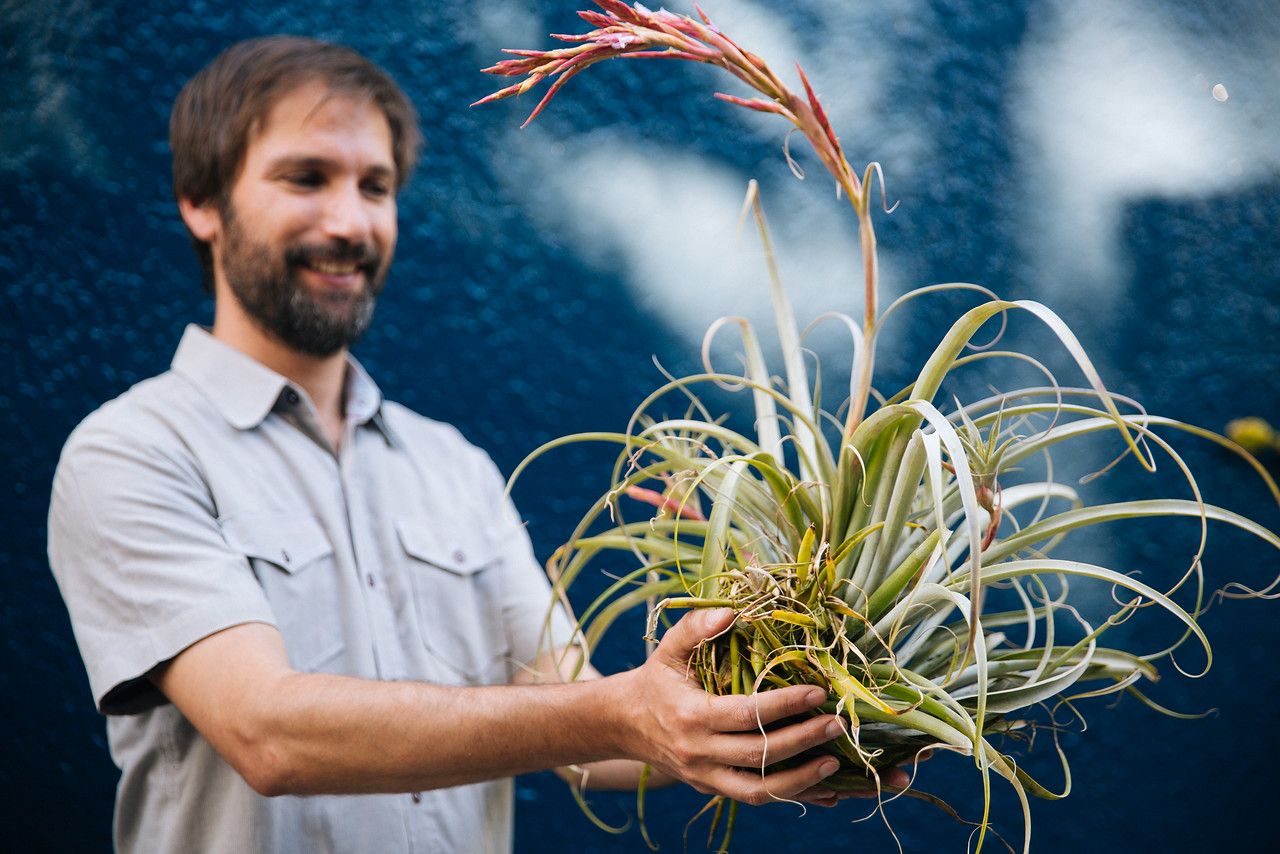
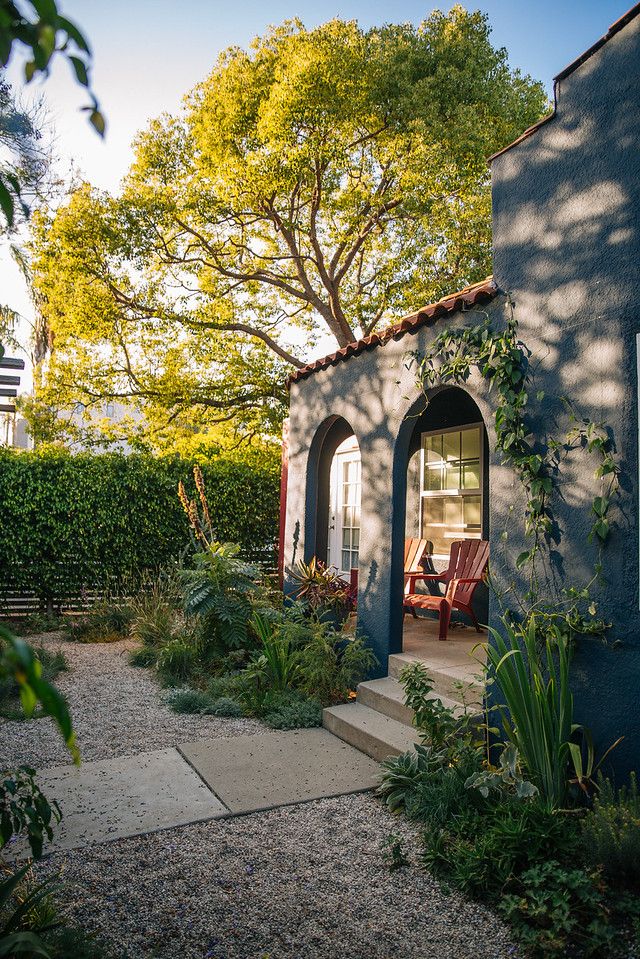
Mitch caught up with Josh at his home/design laboratory in Mar Vista, California earlier this month.

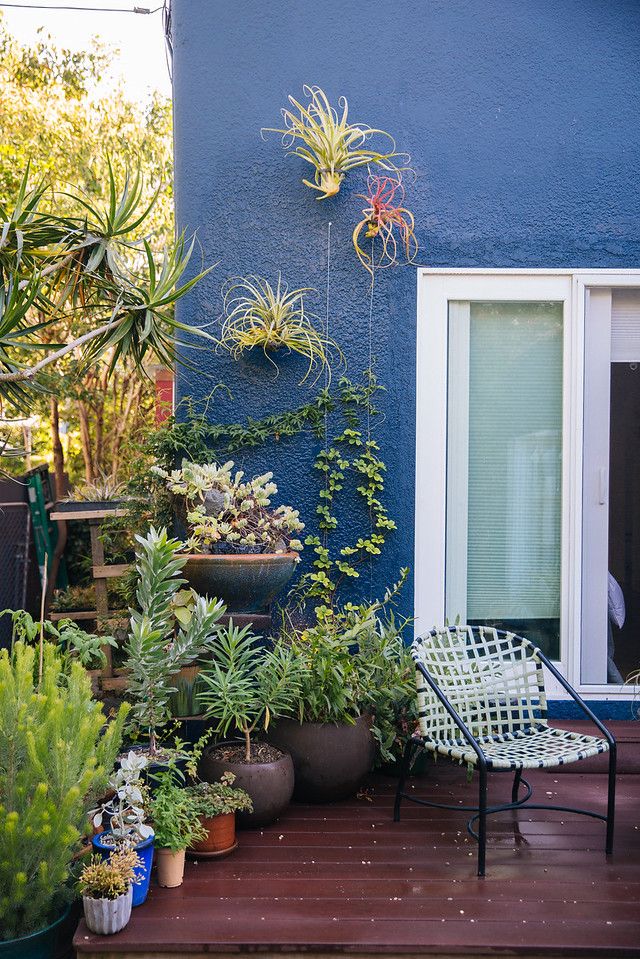

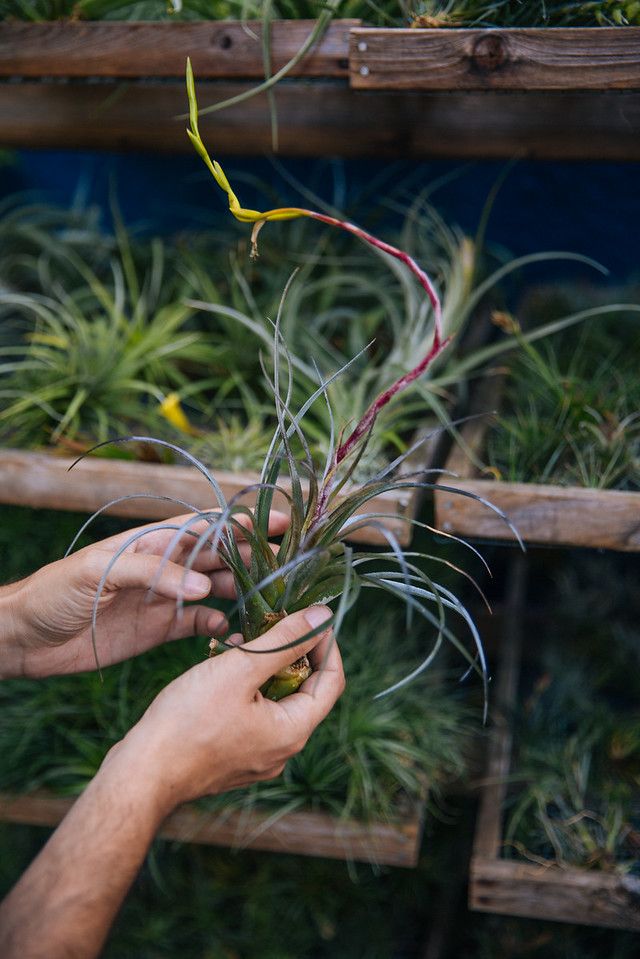

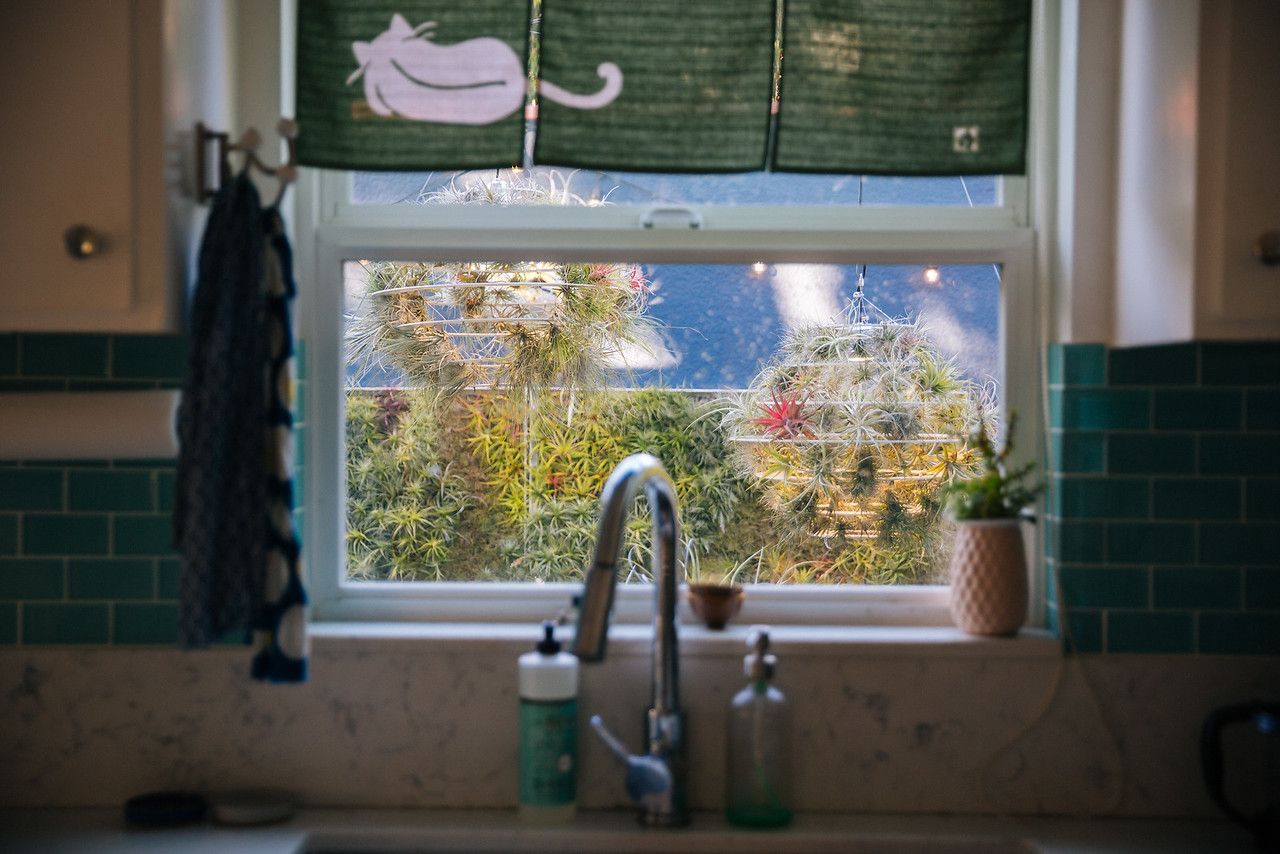
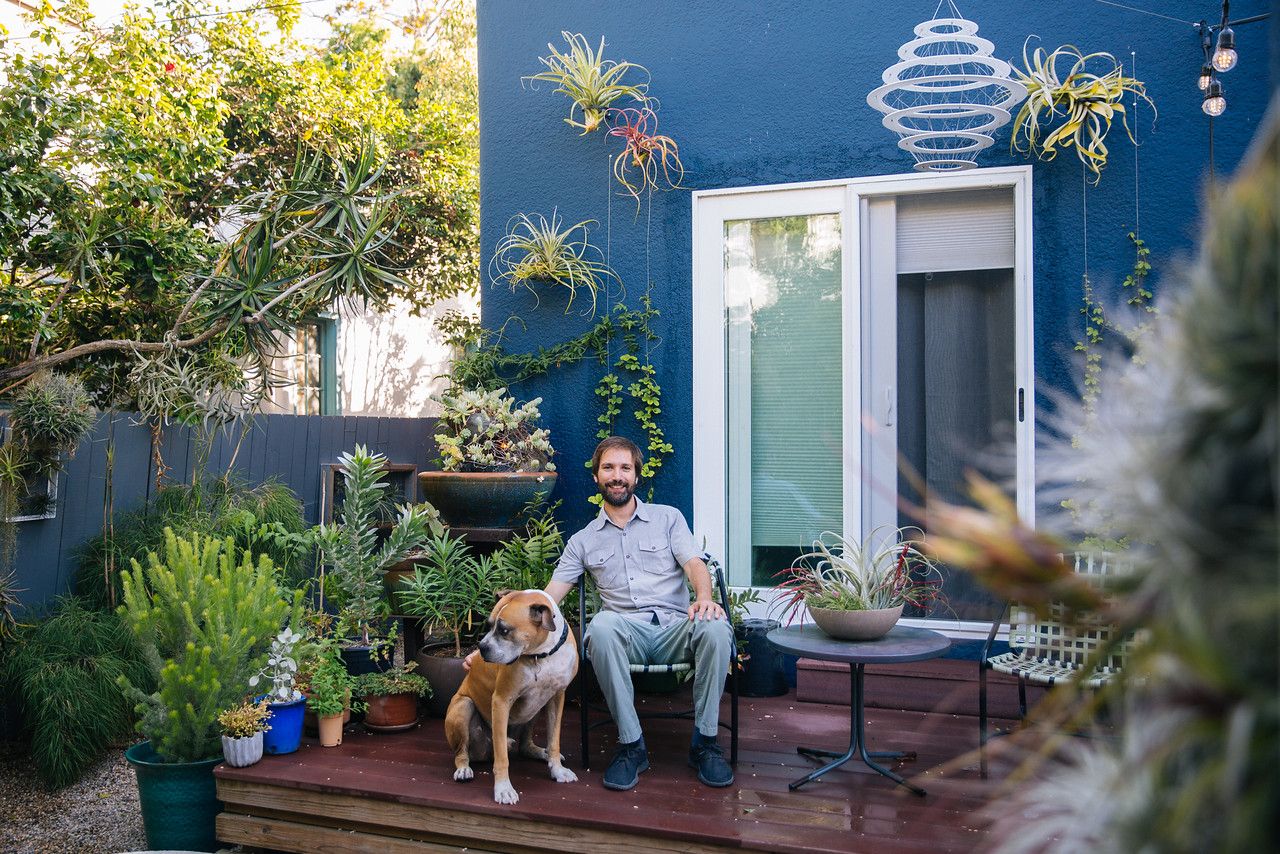
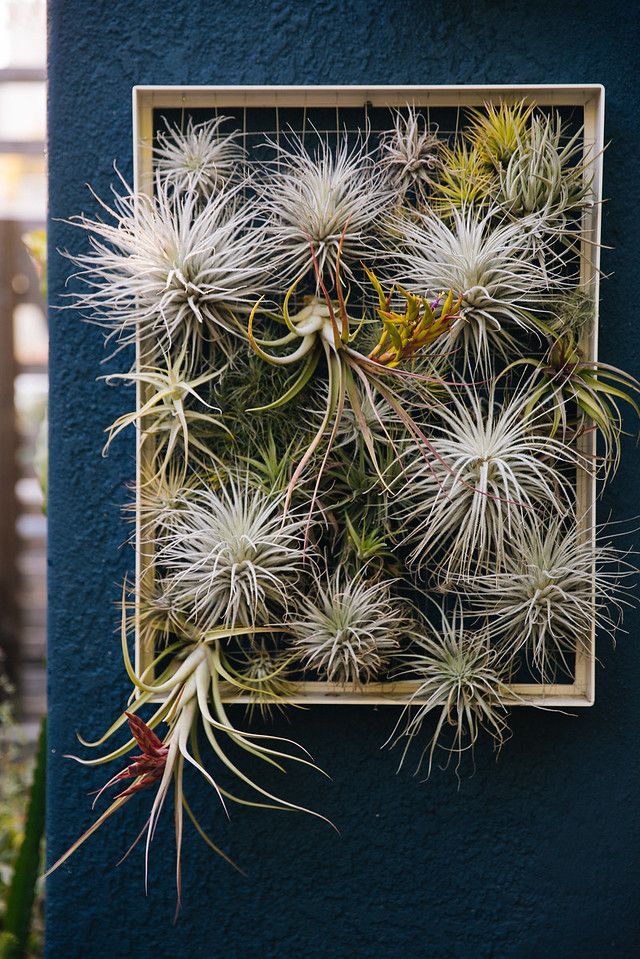

I think I first saw his modular air plant frames back in 2012 at Big Red Sun in Venice and was immediately struck by the serious design chops that honored these little epiphytes’ growth needs as well as cleverly exploited their potential for a soil-less life in a stylishly modern framework. Already in 2012, the public’s infatuation with tillandsias was in full swing, and air plants were routinely being asked to live out their increasingly dessicated days under glass in twee dioramas — no wonder they developed an undeserved reputation for being difficult to grow. Good air circulation and easy access for drenching or frequent spraying are paramount needs that can’t be ignored. And if twee isn’t your jam, grids made on sleek, powder-coated frames provide a) great design b) optimal air circulation c) crucial ease of watering.
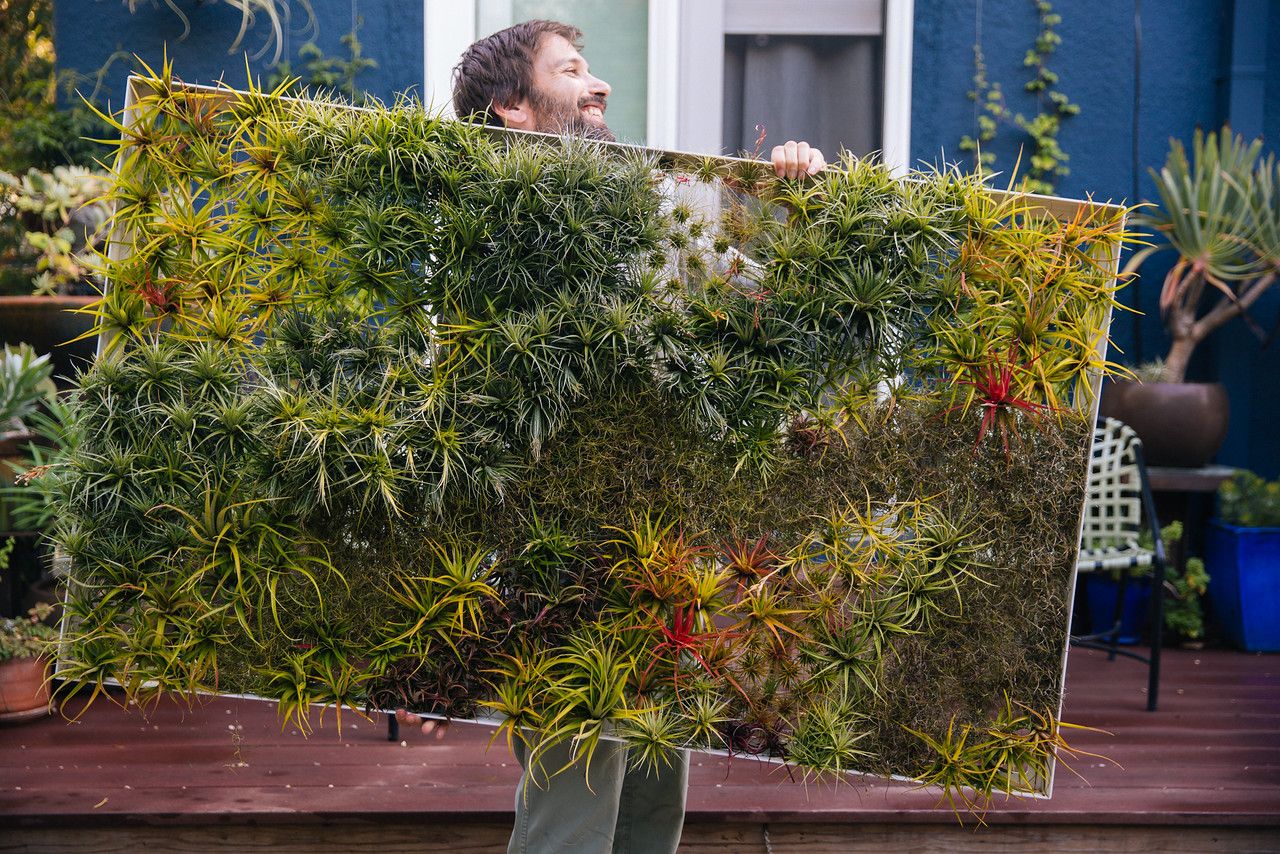
Tillandsias have had the staying power of succulents in their rootless hold on our imaginations. (Actually, they do have roots, but they’re used only as anchors and not for nutrient or water uptake, which all happens through the leaves.) Indoor care is more exacting than for outdoors. Mine are all outdoors and get sprayed a few times a week. For indoor care, Josh says if you position them not more than 6 feet from north or east-facing windows and soak them, as in submerge them, 6-10 hours once a week, preferably in room-temperature tap water left to sit for 15-20 minutes before use, you should be good to go. His frames and vessels are all designed to facilitate this type of care. Grow lights indoors are fine too, no particular spectrum required.
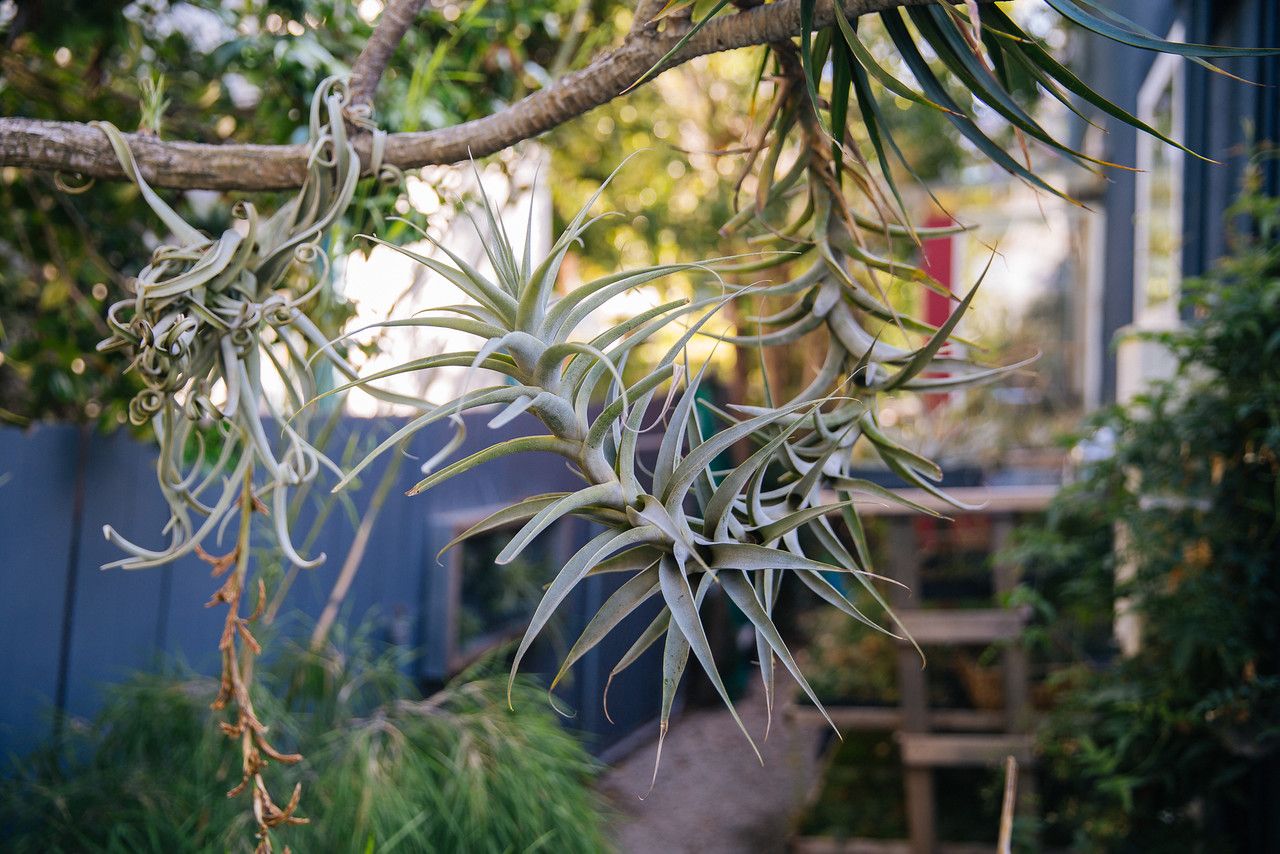
If spraying is your only option, do this several times a week, and make sure no water pools in their crowns because that will surely cause rot, so dry them upside down to avoid pooling. Again, air circulation is critically important, and rotating indoor tillandsias outdoors when possible is a good idea, or at least keep a window cracked. And don’t manhandle them either — oils in our fingertips can mess with their ability to uptake water, so keep handling to a minimum.
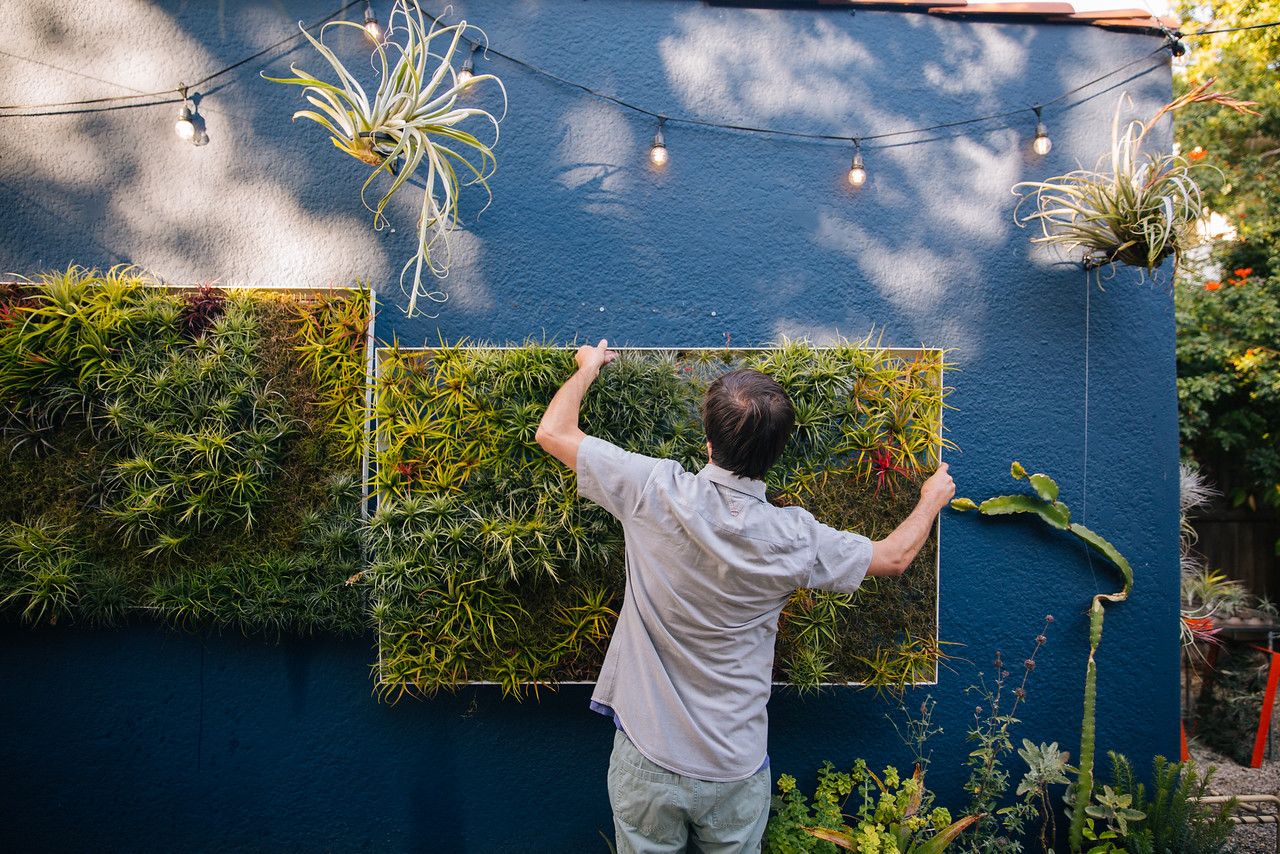
Tillandsias are in the bromeliaceae family and, like cactus, are found only in the New World, more than 600 species hailing from South America and up into Texas. Their tough, epiphytic ways are a recent adaptation, which Josh finds metaphorically inspiring, now that we face a possibly rootless modernity ourselves that will require quick adaptive moves as year after year becomes the hottest on record. And as far as plant obsessions go, it doesn’t get more lightweight and transportable than tillandsias.

Some of his favorite species include T. chiapensis, T. caput-medusae (most tolerant indoors), T. latifolia, T. ionantha, and of course the dramatic T. xerographica. Many will begin to blush just before bloom, and some of the flowers are incredibly scented.
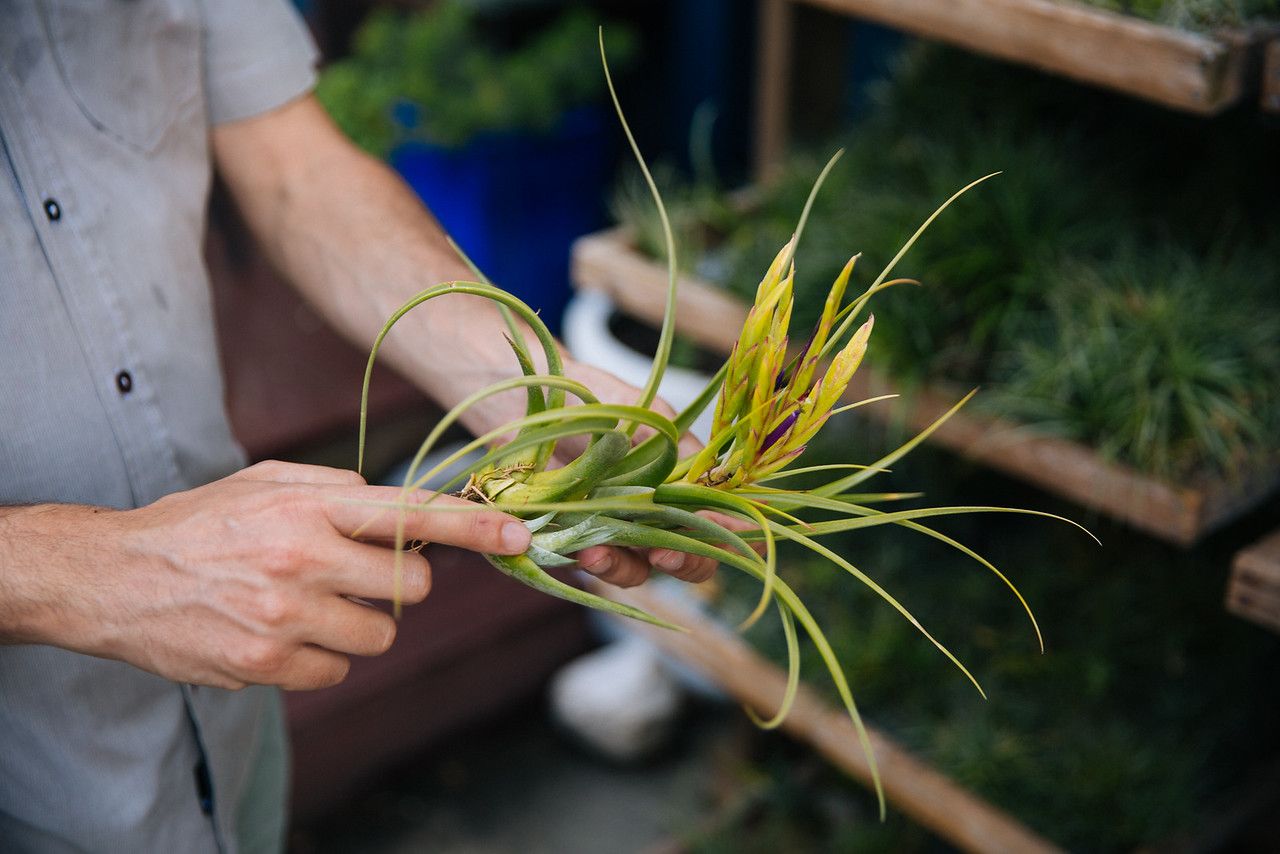
After flowering the mother plant will die off but leave you with some pups, or offsets.
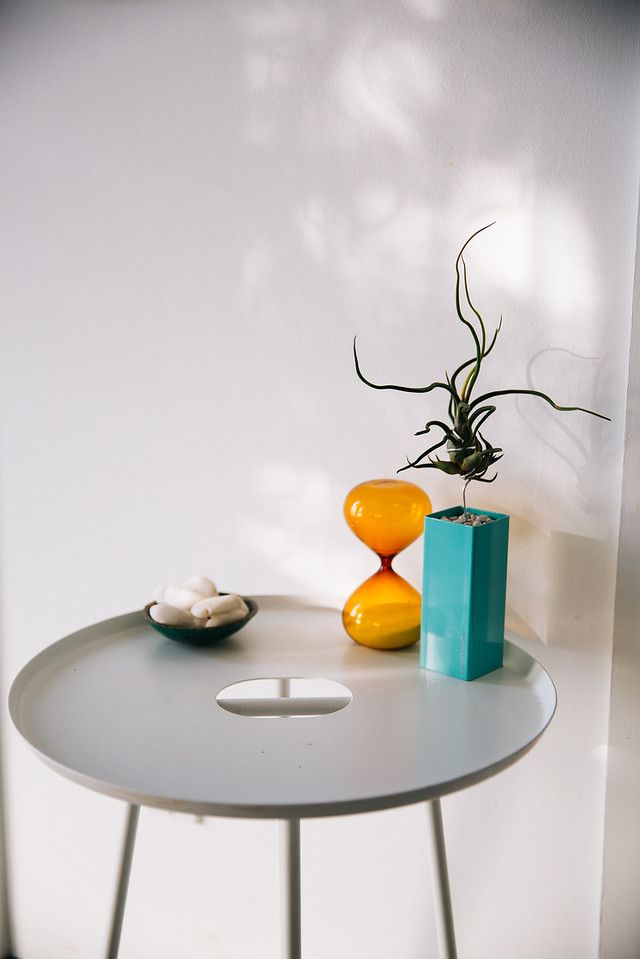
For smaller-scaled, table-top displays Josh has developed air plant vessels in powder-coated steel, ceramic, and wood.
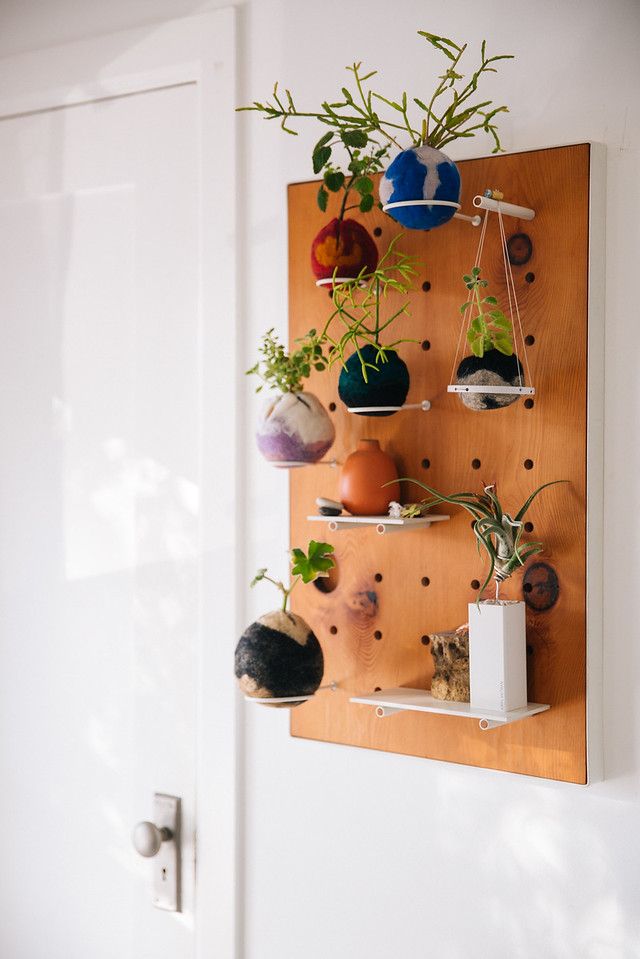
Felted-wool kokedamas on customizable pegboards give lots of options too and look addictingly playable. Josh is exploring working with cacti like rhipsalis and others that, unlike air plants, do require some kind of substrate in which to grow.
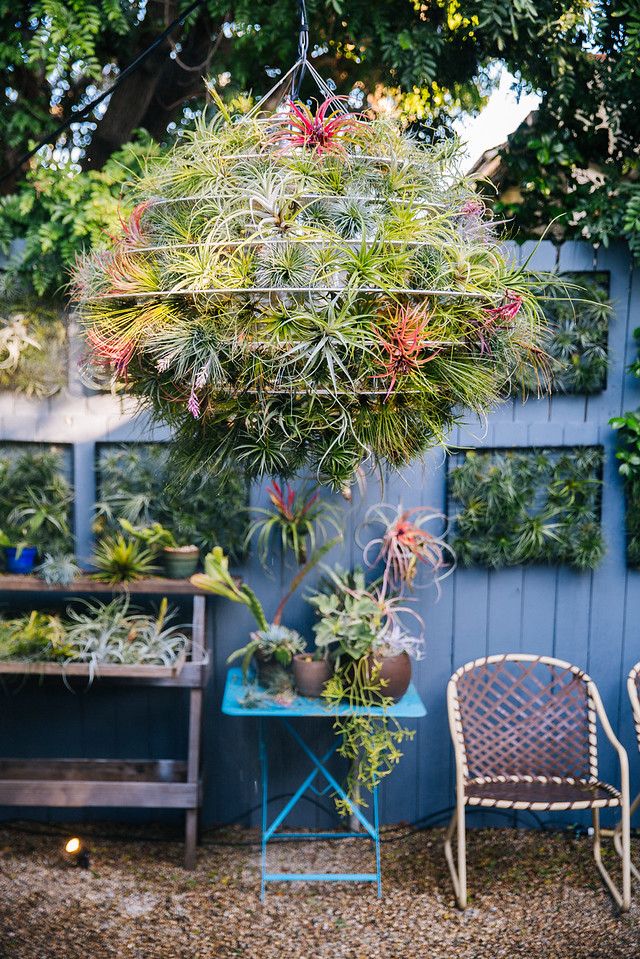
One of his latest designs has the working title of “airplantern,” which came about from some recent custom work when a client asked for a lantern planted with tillandsias. Josh envisions the airplantern as more for outdoors than the frames, say for hanging from a tree in temperate climates.
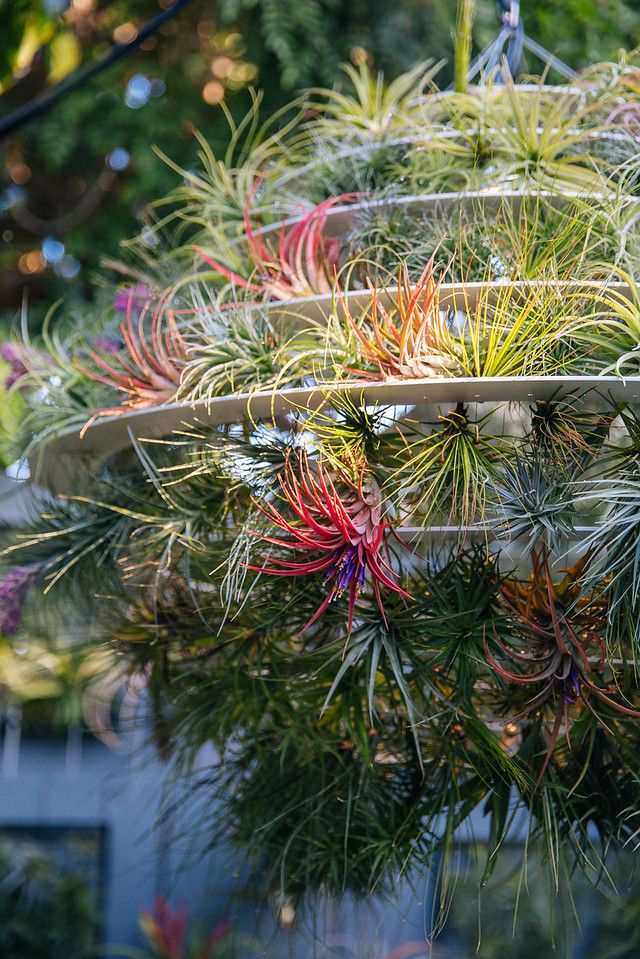
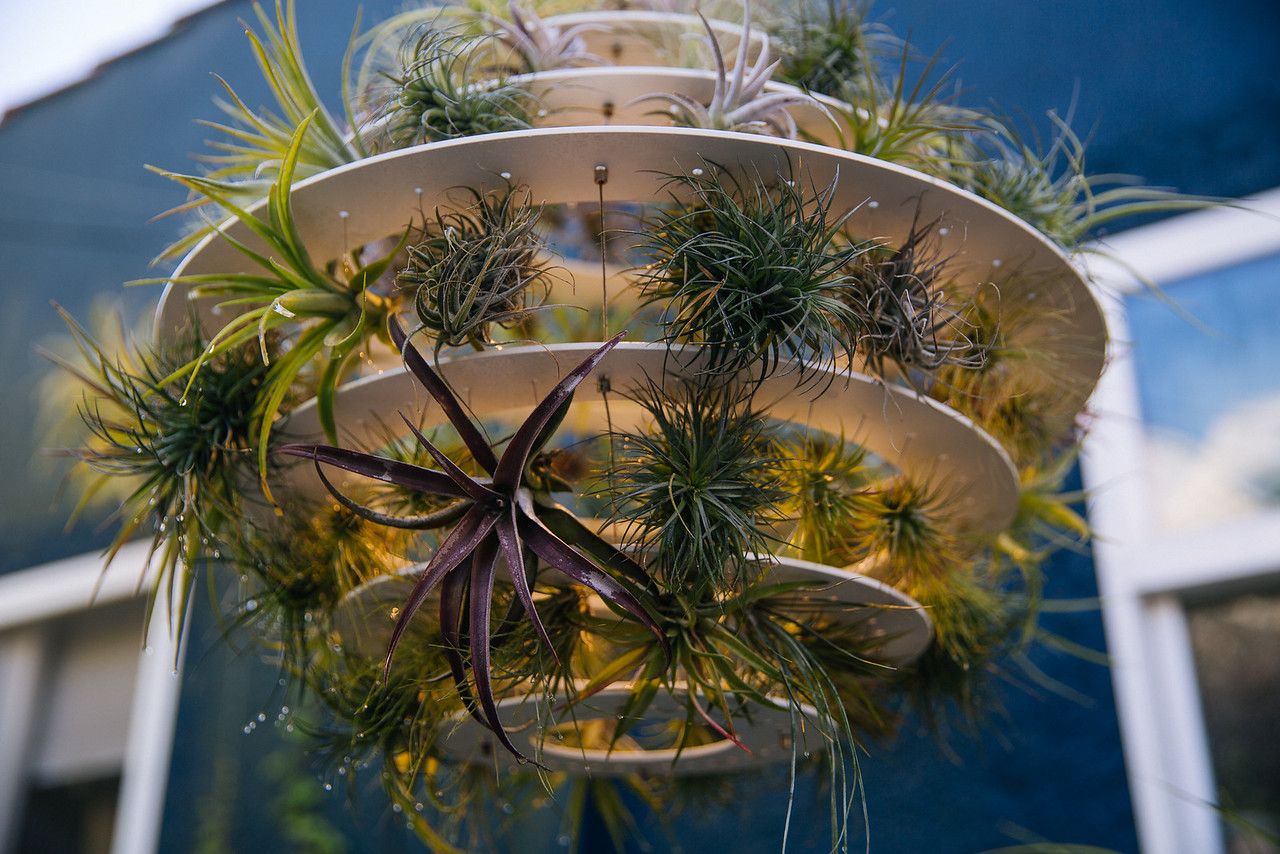
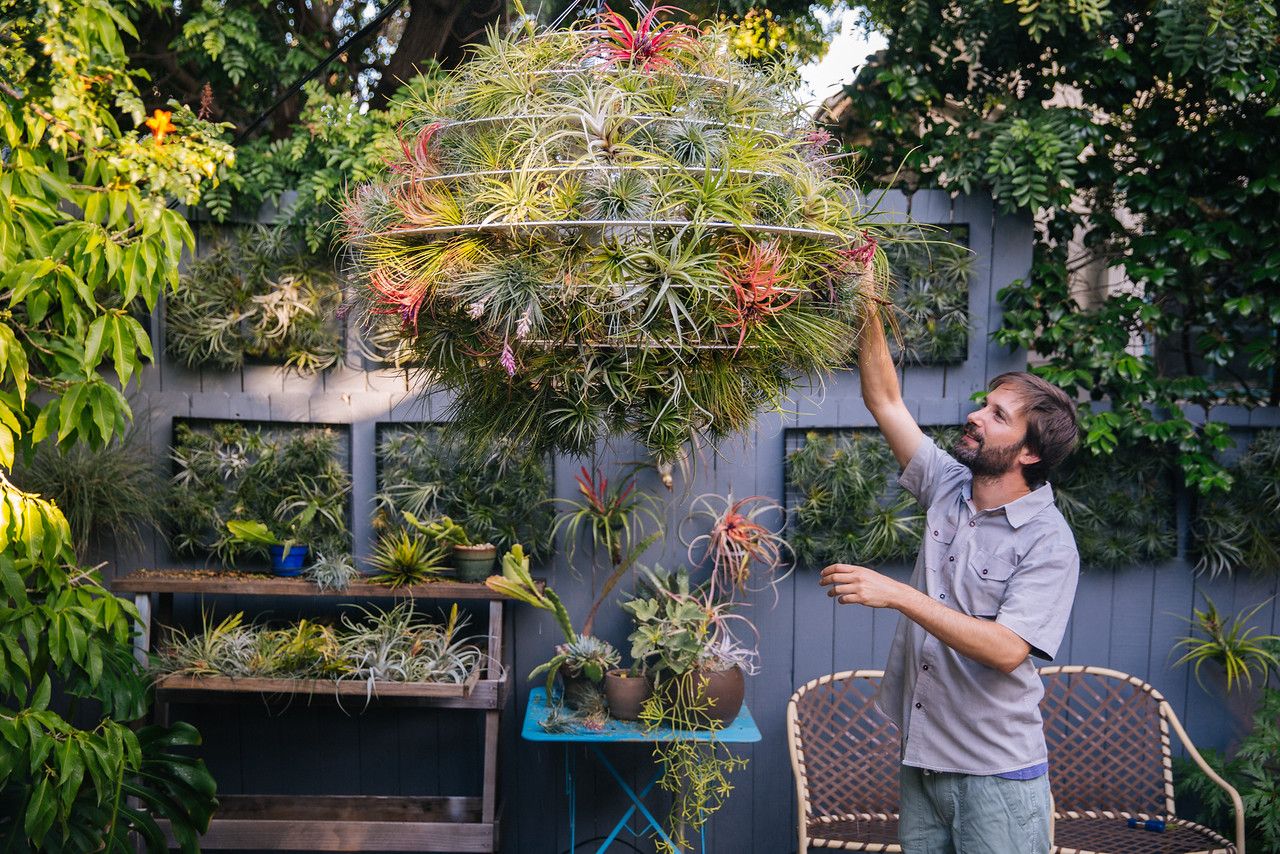
The bigger spheres come with misters and lights, and the flexibility of the design allows it to be pulled into other shapes as well.


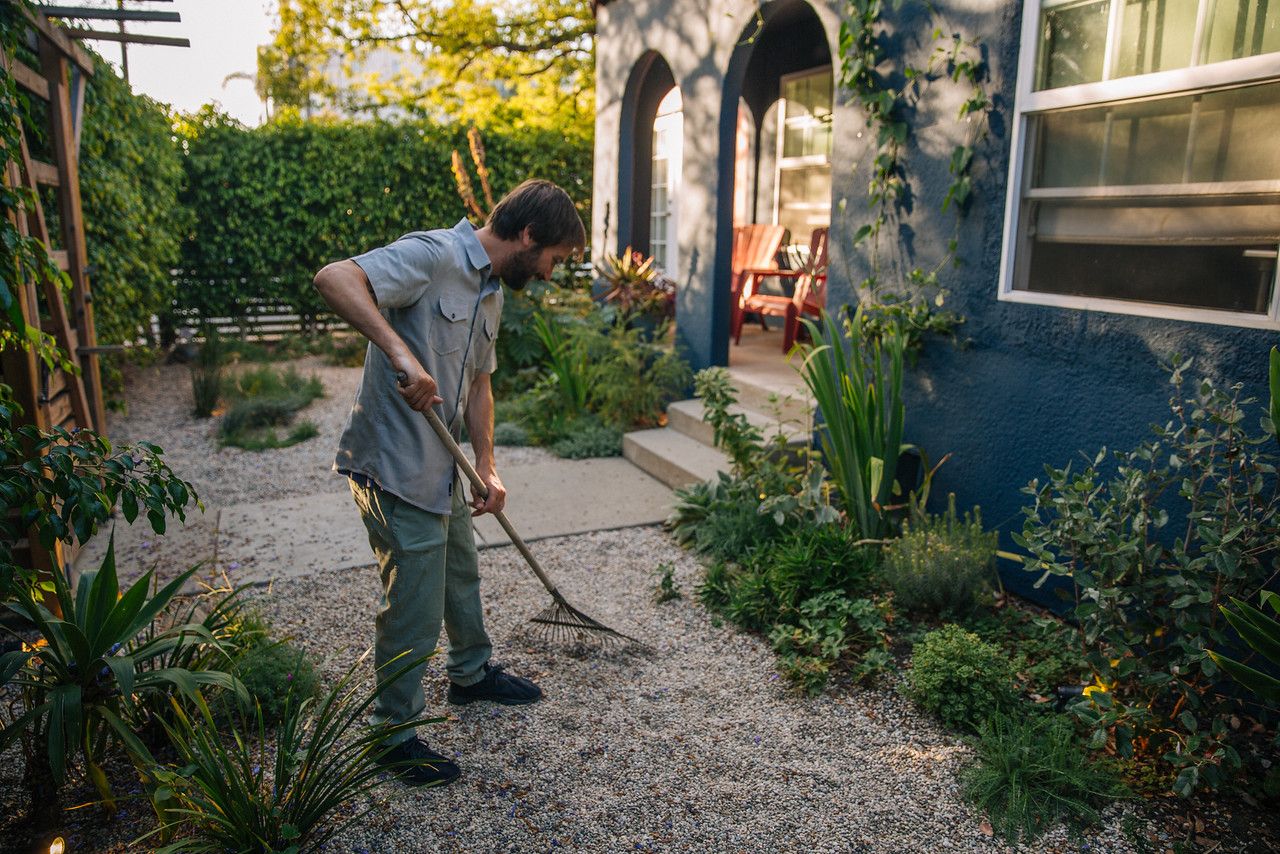
Thanks so much, Josh, for sharing your home with us and giving us a peek of your new work!
Photos by MB Maher

I’m at a loss for words. All airplantman’s creations are incredible.
Wow, those are freaking amazing. Great post!
Delicious!